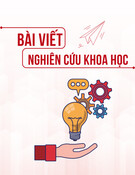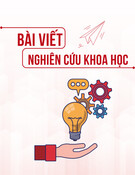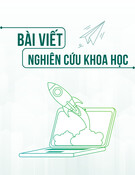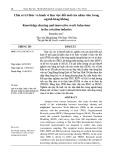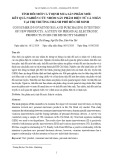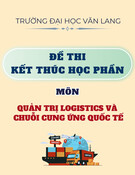
* Corresponding author
E-mail address: mihardjo@gmail.com (L. W. W. Mihardjo)
© 2020 by the authors; licensee Growing Science.
doi: 10.5267/j.uscm.2019.7.005
Uncertain Supply Chain Management 8 (2020) 187–196
Contents lists available at GrowingScience
Uncertain Supply Chain Management
homepage:
www.GrowingScience.com/uscm
Maximising co-creation strategy through integration of distinctive capabilities and customer
experiences in supply chain management
Leonardus W. Wasono Mihardjoa*, Sasmokoa, Firdaus Alamsyaha and Elidjena
aBina Nusantara University, West Jakarta, Indonesia
C H R O N I C L E A B S T R A C T
Article history:
Received June 7, 2019
Received in revised format June
25, 2019
Accepted July 12 2019
Available online
July 14 2019
This paper makes an assessment on the impact of co-creation strategy as part of digital
transformation in Industry 4.0 on supply chain management. We argue that the concept of
strategy has shifted from the competitive strategy into co-creation strategy based on
collaboration value. In developing co-creation strategy, the input is derived from external
factors associated with customer experience and internal factors related to distinctive
capabilities and both focus on core competence development in supply chain management. We
use telecommunication firms as our unit analysis with sample of 35 Indonesian Information
and Communications Technologies (ICT) firms analysed using Partial Least Square (PLS). The
findings show that the developing of co-creation strategy was supported by distinctive
capabilities and customer experience. The findings also indicate that co-creation strategy
emerges as a key in sustaining business of the firms to focus on developing customer
experience and providing distinctive capabilities.
.
by the authors; licensee Growing Science, Canada
20
20
©
Keywords:
Co-creation strategy
Distinctive capabilities
Customer experience
Supply chain
1. Introduction
Industry 4.0 drives businesses into more complex and dynamic. By increasing the complexity, not all
value chains can be fulfilled by internal capabilities, therefore the collaboration with stakeholders to
accelerate processes and innovate business models is important and provide co-creation value to
stakeholders (Zott et al., 2011). There are several studies which indicate the significant impact on the
acceleration of value creation in an established company, especially on consumer sectors (Fuller, 2010).
To anticipate the complexity of products and services, several solutions can be delivered (Kagermann,
2015) such as sharing economy (Matzner et al., 2018), virtualization (Monios & Bergqvist, 2015), and
transforming traditional businesses to be more innovative, standardized, modular, interoperable,
decentralized, real-time, virtualized and service-oriented (Ibarra et al., 2019). The co-creation concept
was first adopted in the marketing context to develop innovation and value creation capabilities by
providing value and collaboration with customers and minimize the cost of exploring innovation
(Prandelli et al., 2006; Sawhney et al., 2005; Stamm, 2004). Co-creation will drive the personalization
of services and products for customers, while optimizing digital technology such as big data, CRM,
and digital marketing will leverage customer value, with an expectation that customers gain experience
(Prahalad & Ramaswamy, 2000)





